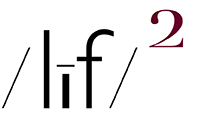wicker chair
the light
rain
The rain picture in this entry was processed (RAW conversion) using RPP. If your monitor isn't reasonably calibrated, the astounding level of detail in the dark areas of the picture might not be visible. In fact, that may be true unless your monitor is perfectly calibrated.
In any event and relative to yesterday's entry re: RPP, the developer's claim about RPP's ability "to obtain that dearly-looking film-like tonality in your pictures", if I understand the claim properly, is predicated on what they call "different development modes". Those "development modes" are selectable film-type simulation modes of processing which render a specific film-type look to the finished RAW conversion.
iMo, so far as I have tested them, the different development modes - B&W = Agfa APX 25, B&W = Kodak Vision2 50D, Technicolor 2Strip, Kodak Portra 160NC, Fujichrome Astia 100F, Kodachrome 64, Fujichrome Velvia 50, Technicolor System4 die Transfer, Kodak Ektar 25 - create reasonably accurate simulations of those specific film types.
While I have yet to zero in on a single film-type "development mode", my inclination is to use the Kodak color negative modes. Kodak color negative film was the gold standard for reproducing - inasmuch as film technology allowed - accurate, well balanced and neutral results (no strongly marked individual color emphasis - think Velvia greens). In my film days KODAK color negative films were my film of choice for my personal picture making (most commercial clients demanded transparency film). This choice was completely independent of the fact that KODAK was my biggest client.
